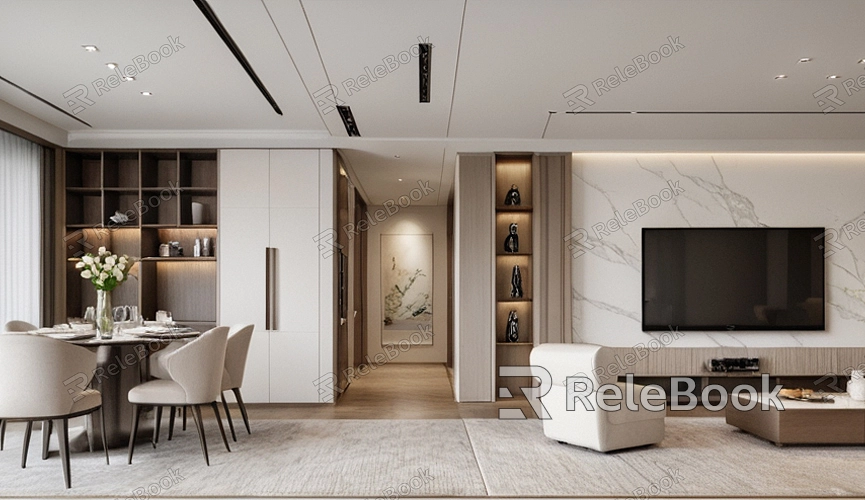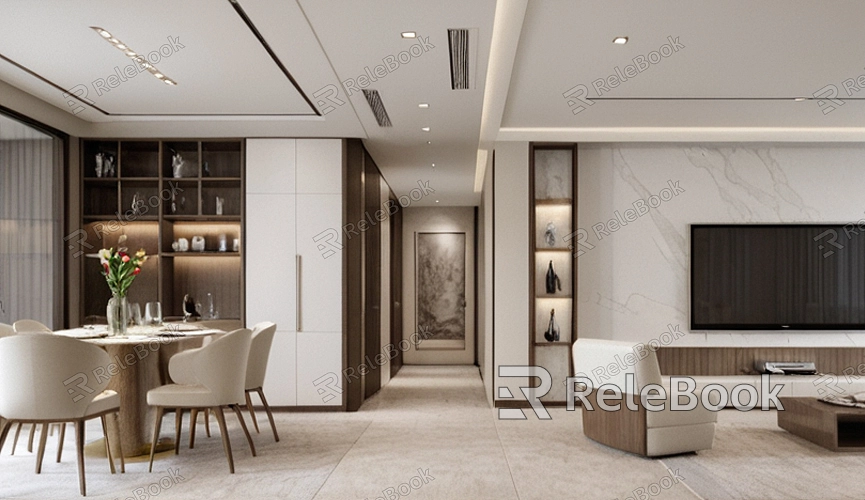How to Unwrap 3D Model Textures?
In modern design, unwrapping 3D model textures (often called UV mapping) is a crucial step. It involves laying out the surface of a 3D model onto a 2D plane so that texture images can be accurately applied to the model. Simply put, it’s like unfolding the exterior of a model to paint it as you would on a piece of paper. This article will provide a detailed guide on how to perform this process and help you master this important skill.

Understanding UV Mapping
UV mapping is the process of mapping the surface of a 3D model onto a 2D plane. To better understand this, think of it like unfolding a globe into a map. Each surface of the model consists of small faces that need to be laid out on a flat plane so that textures can fit properly onto the model.
Preparing Your 3D Model
Before you begin UV mapping, it’s important to prepare your 3D model. This includes ensuring the model is free from geometry errors such as overlapping faces or invalid normals. You can use popular modeling software like Blender, 3ds Max, or Maya to check and fix these issues.
Choosing the Right Software
To unwrap 3D model textures, you need to use specialized 3D modeling software. Here are a few commonly used tools:
1. Blender: Open-source and powerful, suitable for most users.
2. 3ds Max: Professional software for advanced modeling and animation.
3. Maya: Widely used in film and game production, comprehensive in features.
4. Cinema 4D: Ideal for motion graphics and animation.
These software tools have built-in UV mapping tools to help you lay out the model onto a 2D plane.

Using UV Mapping Tools
For example, in Blender, the general steps to UV unwrap are as follows:
1. Select the Model: Start by selecting the 3D model you want to unwrap.
2. Enter Edit Mode: Switch to Edit Mode.
3. Select Faces: Choose the faces you want to unwrap, often selecting all faces of the model.
4. Unwrap UV: Use UV mapping tools like “Unwrap” or “Smart UV Project” to unwrap the model’s surface. Blender offers various unwrapping methods; choose the one that best suits your needs.
5. Adjust UV: After unwrapping, you may need to make further adjustments. In the UV Editor, you can move, scale, and rotate UV maps to ensure textures align correctly.
Checking the UV Mapping Results
After unwrapping UVs, the next step is to check the results. Make sure the unwrapped UV image doesn’t overlap and that all faces display textures correctly. If there are issues, you can return to Edit Mode to make adjustments until the results are satisfactory.
Applying Textures
Once UV mapping is complete, you can apply texture images to the model. Map the texture image onto the unwrapped 2D plane and check how it appears on the model. Ensure there is no stretching or distortion of the texture, and adjust as necessary.
Exporting and Using
Finally, after completing UV mapping and applying textures, you can export the model in the required format for use in your project. Ensure that the exported model and textures meet the specifications of the target platform to display correctly.
UV mapping is a crucial step in 3D model creation, allowing you to lay out the model’s surface onto a 2D plane to apply textures accurately. By using specialized 3D modeling software, you can complete this process and ensure your textures display correctly. Mastering UV mapping not only enhances your modeling skills but also helps you create more detailed and realistic 3D artwork. For more 3D models and texture resources, visit the Relebook website to download the materials you need and enhance your creative projects.
FAQ
Why is UV mapping necessary?
UV mapping is essential to accurately apply texture images to a 3D model. This process ensures that the texture fits properly on the model without distortion or incorrect display.
How do I choose UV mapping tools?
Different software provides various UV mapping tools. The choice depends on your specific needs and preferences. Blender offers multiple unwrapping methods, like Unwrap and Smart UV Project, which you can select based on the complexity of your model.
How do I adjust the UV image after unwrapping?
After unwrapping, you can adjust the UV image in the UV Editor. You can move, scale, and rotate UV faces to ensure the texture aligns correctly. Ensure the adjusted UV image doesn’t overlap and accurately maps onto the model.
What are common issues with UV mapping?
Common issues include overlapping UV images, texture stretching, or distortion. Address these problems by carefully checking the UV mapping results and making necessary adjustments to ensure a proper texture fit.
How do I check the results of UV mapping?
Check the results by applying the texture to the 3D view. If the texture displays correctly on the model without distortion or misalignment, the UV mapping is successful.

